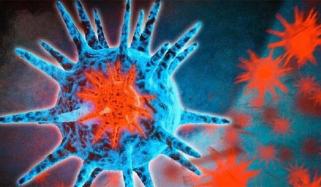
Migraine headaches affect a large number of individuals globally, posing a considerable health burden.
A new study published in Science sheds light on the neurological mechanisms underlying migraines, a condition that affects one billion people worldwide.
Research conducted in mice suggests that brief brain "blackouts" lead to changes in cerebrospinal fluid (CSF), activating pain receptors in the skull and causing headaches.
The study shows that during a cortical spreading depression (CSD), a short shutdown of neuronal activity, the content of CSF changes.
This altered fluid travels through a previously unknown gap to the trigeminal nerve, triggering pain and inflammatory responses.
Gregory Dussor from the University of Texas at Dallas emphasised, "This work is a shift in how we think the headaches originate."
He noted that migraine pain might act as a warning sign for various issues inside the brain.
The research team, led by Maiken Nedergaard from the University of Copenhagen, found that during a CSD, certain protein levels in the CSF change significantly.
This includes an increase in the pain-transmitting protein CGRP, which is targeted by some migraine medications.
They discovered a gap in the protective layers around the trigeminal ganglion, allowing the altered CSF to reach these nerve cells and trigger headaches.
The findings highlight a potential interaction between changes in the brain and their impact on peripheral nerves.
"This study raises many interesting questions and will likely lead to new research projects," said Dussor, suggesting that future studies should explore why these specific proteins in CSF trigger migraines but not other types of pain.















